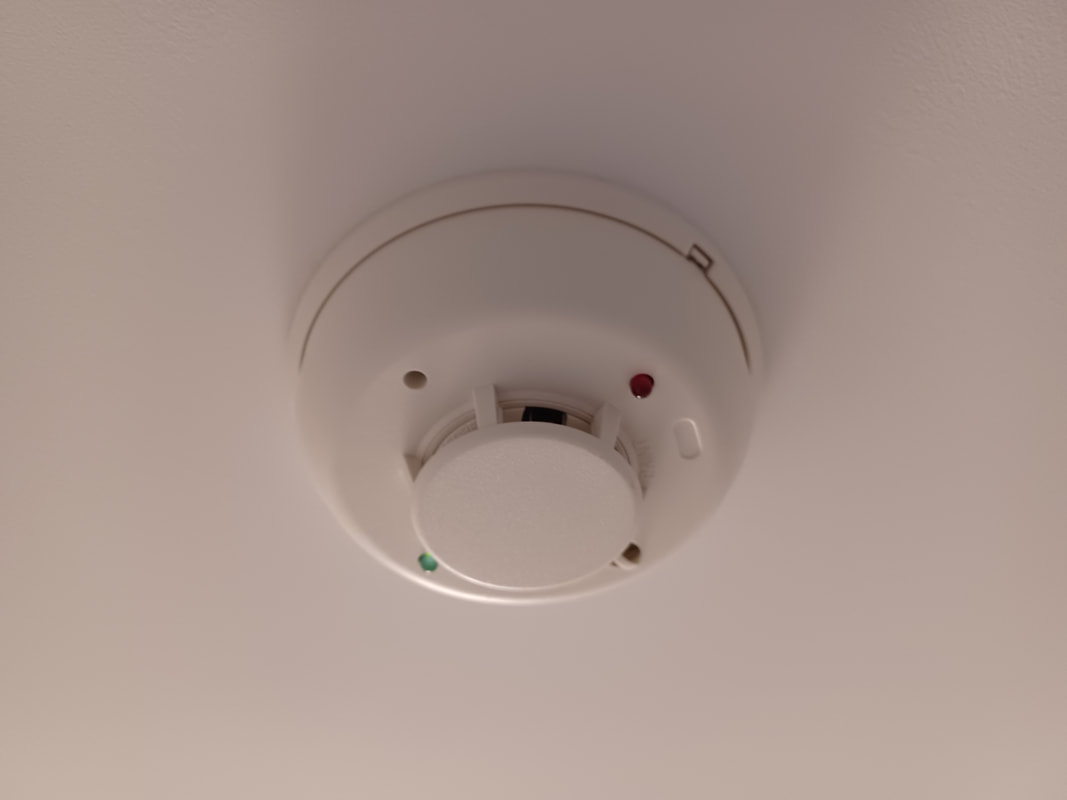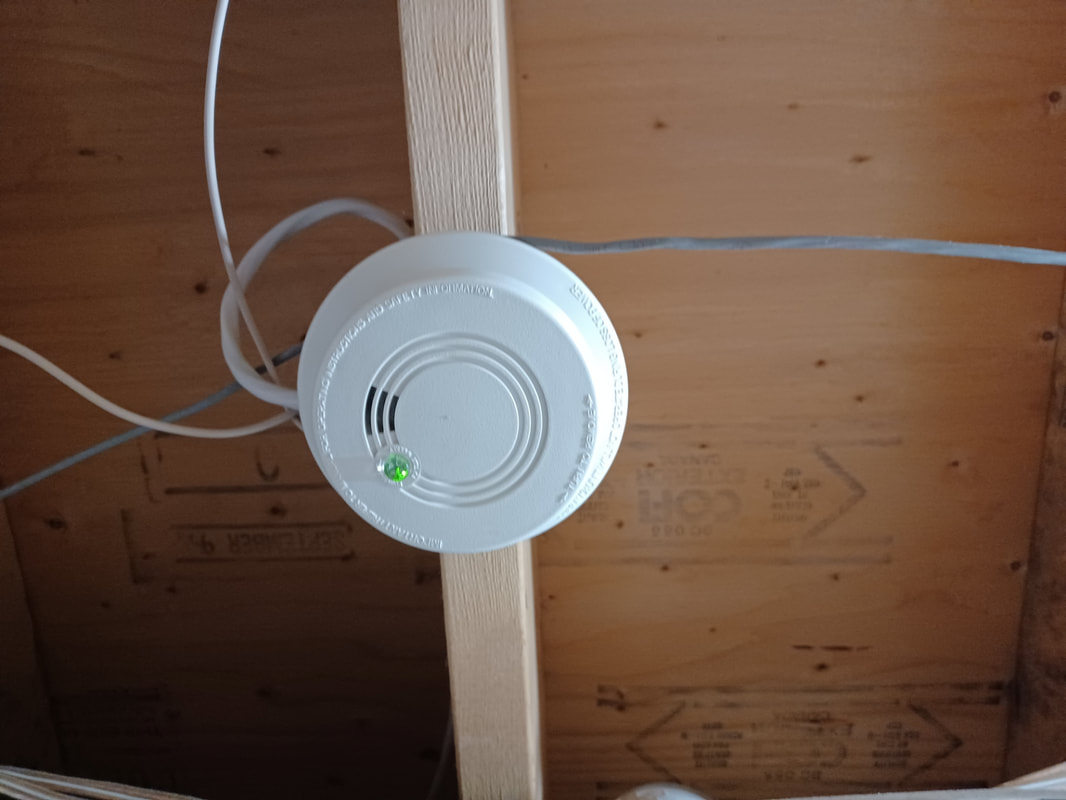Mike's Home Inspector BlogMichael Burfitt |
|
Nine Ladies Dancing Around Carbon Monoxide Detectors Carbon Monoxide (CO) is a silent killer as it binds to hemoglobin in the blood, cutting off the ability of the blood to carry oxygen. This byproduct of incomplete combustion is undetectable by our senses—it's odorless, tasteless, and invisible. Every home that utilizes a combustion system faces the risk of CO leaking into living areas. However, merely installing a CO detector isn't enough. These detectors lose their accuracy over time and typically function effectively for only 5 to 7 years. Sadly, many CO (and smoke) detectors I encounter are near the end of their lifespan. Therefore, it's imperative to check and replace them before it's too late. Ten Lords-a-Leaping to Window and Door Checks When it comes to home energy efficiency, windows play a crucial role. Upgrading them can indeed save energy and money, but the substantial cost of new windows might not always be cost-effective in the long run. During inspections, we pay attention to signs like difficult-to-open windows and uneven doors. While these issues can signal structural concerns, more often, they result from normal settling and can be rectified by re-shimming. Foggy windows are another common issue, signaling failed seals that require prompt attention. Remember that window issues aren't restricted to older installations: this one was approximately 5 years old! Eleven Pipers Piping Pest Prevention
Pest problems are common in many homes, with mice and rats being frequent issues in our city and province. Preventing their entry is key. By sealing holes, managing nearby vegetation, and removing potential food sources, homeowners can significantly reduce the likelihood of infestations. Twelve Drummers Drumming Up Home Safety
And, of course, never underestimate the value of a professional home inspector! On behalf of the entire Inside Edge family, we wish you the very best this holiday season. Have a safe and Merry Christmas, Happy New Year and we look forward to seeing you in 2024! …or why I have two smoke detectors next to each other in the basement. One of the biggest safety issues I see in my home inspections is also one that is easy to remedy: the lack of smoke detectors or (more commonly) the prevalence of smoke detectors that are past the 10-year life expectancy and should be replaced. It’s an easy fix: almost every hardware store sells them for a very affordable price. They are not only an invaluable life safety device that can save lives but, along with fire extinguishers, can help stop a fire from becoming out of control and destroying a home. As mentioned, I have two smoke detectors in very close in proximity in the basement. The obvious reason for this is so that there is no question we will hear the alarm upstairs while sleeping and as a backup if one fails, but it is a little more complicated than that. The main reason is that the detector present when we moved in was ionization and I wanted an photoelectric alarm, especially near the dryer. Does this mean a photoelectric detector is better? The truth is more complicated than that. Ionization Advantages The biggest advantage of this type of detector is that it is superior in detecting flaming fires. In other words, fast moving fires that can quickly overwhelm occupants and block escape routes. This would be fires as the result of paper, wood or flammable liquids to give a few examples. These detectors are, believe it or not, filled with a radioactive substance called Americium. As scary as that sounds, the amount is astronomically tiny and poses no threat as long as they are not deliberately dismantled. In my experience, most smoke detectors utilize ionization technology. Why Use a Photoelectric Detector? Photoelectric smoke detectors are better at detecting smoldering fires, which are fires that are barely visible with a lazy haze of smoke, often for hours. A common example would be a burning cigarette, and a photoelectric detector can alert occupants to a situation that can lead to a flaming fire and give time to act (either fight or flee) accordingly. Which is Better?
I will again use my most common stock phrase and say “it depends” but the most important fact is that placement is far more important than what type you have. The simple facts are:
While it is a great idea to know the difference between the two types of residential smoke detectors, this is not generally something that home inspectors note. What IS important is that smoke detectors are installed, are working, and are well placed to maximize safety and minimize nuisance alarms. It is concerning that few homes have proper smoke detectors installed and this is one of the easiest and cheapest DIY jobs. I hope that one day I will never again hear about a fatality caused by occupants not being aware of a house fire and being unable to escape in time. I had an incident at home a couple of years ago: it was about 6am one morning, my son was just a baby and as any of you parents know sleep was at a premium at that time. We all were in a much-needed deep sleep when I realized there was a BEEP BEEP sound in the house. I immediately jumped up and went to investigate. Turns out it was an older (and quieter) smoke detector downstairs that was defective and needed to be replaced but it occurred to me that the sound was muffled, and it wasn’t immediately obvious it was the smoke detector. As soon as the store opened, I purchased and installed a brand-new, much louder unit before heading off to work and made sure to carefully inspect my entire system that evening, including checking to see if I could still hear the basement detectors from the bedrooms with the doors closed.
One of the most worrying trends I see as a home inspector is the lack of proper smoke and carbon monoxide detection. My concerns include poor placement and outdated units right up to a complete lack of units in the home. Smoke & Carbon Monoxide (CO) detectors should be located:
Conversely, they should not be located:
There are various models available that are hardwired, run on batteries, or a hybrid of the two, where batteries are used as a backup. I always recommend the hybrid model, which provides the stability of being attached to the home’s electrical system but with the backup in case of power failure given the frequent power outages we have in Nova Scotia. Ideally, all detectors should be linked together so that all sound when one goes off, although that can be difficult to retrofit into older homes. CO detectors serve a similar potentially lifesaving purpose. While dangerous levels of CO in a home is relatively rare, the simple fact is that CO is odorless, tasteless, and toxic to humans even in small quantities. While not all homes have to worry about CO (such as all-electric homes without garages), in most cases is it is necessary to have CO detectors in the same locations as smoke detectors. It is not enough to just install and forget about these units: not only should they be regularly inspected and tested, but they need to be replaced regularly. Smoke detectors usually have a life expectancy of about 10 years and CO detectors should be replaced every 5 years. Combined, these two types of detectors could save your life (smoke in particular only takes minutes to become fatal) and need to be treated as critical components to a safe and healthy home. |
Archives
July 2024
Categories
All
|
|
Inside Edge Home Inspections Ltd.
Halifax, NS 902-209-9921 [email protected] Proudly Serving the HRM & Central Nova Scotia |




 RSS Feed
RSS Feed

